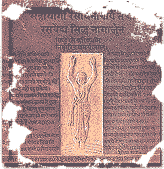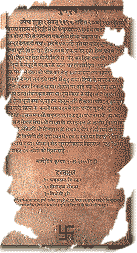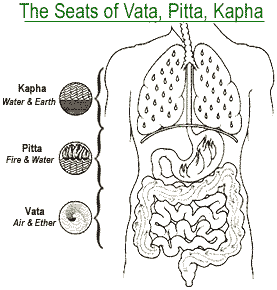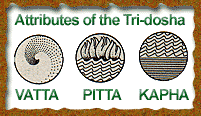Ayurveda meditation yoga concepts are rooted in which body type is practicing. Vata Type needs to practice with slow breathing and repeat a mantra while sitting.
Pitta can sit for hours and Laughter,which is fast becoming a movement to reach blissful states of relaxation called Laughing Yoga.
Kapha can endure long sits and do complicated mantras or walking meditation is very good for them.
Ayurveda Meditation Yoga has traditionally been integral to many cultures and religions around the world, from Roman Catholicism to Jewish mysticism to Tibetan Buddhism.
It is as varied as these religions and cultures are themselves, and has many goals, techniques, and effects.
Ayurveda Meditation yoga allows mental chatter to quiet and eventually cease, at first for moments and then, with practice, for minutes at a time.
During those moments during Ayurveda meditation yoga the consciousness and the body are cleansed and you experience the state of pure being, of oneness with the universe—transcendence.
Many people find that with regular ayurveda meditation yoga they experience a profound shift in their inner lives. This in turn can also affect physical health.
In fact hundreds of meditators have been studied and their physiological processes have been measured. Researchers found that meditation does the following:
Ayurveda meditation yoga reduces blood levels of stress hormones, which are associated with poor health and aging
Reduces levels of lactate, a substance related to high levels of anxiety
Ayurveda meditation yoga Lowers or normalizes blood pressure and pulse rate
Lowers respiration, oxygen consumption, and metabolic rate
Lowers abnormally high cholesterol levels
Ayurveda meditation yoga Enhances immune system response
Increases alpha brain-wave activity, which is present during times of creativity and relaxation
May increase concentration, memory, and creativity
Ayurveda meditation yoga is deeply relaxing and rejuvenating as indicated by their blood pressure, visual acuity, and hearing.
New research shows that meditators have up to nearly 50 percent higher levels of a hormone called DHEA.
Low levels of DHEA are considered to be a marker for exposure to chronic stress and for aging.
High levels of DHEA are associated with reduced incidence of disorders such as heart disease, breast cancer, and osteoporosis, to name a few.
Relaxation and Breathing practices comes in as many forms as there are people on the planet.
There are many schools of meditation, and they are all connected to the triad of ayurveda meditation yoga and what they all have in common is that they bring your attention to rhythmic breathing, to an object, or to a word or thought or mantra such as the word om.
Or you focus outward on something, such as a candle, a picture, God, or a space four feet in front of your nose. The process gently draws you inward until you reach your mind's own deepest nature. In ayurveda meditation yoga approach each body type needs a different approach so first know your dosha then plan your approach.
Ayurveda Meditation yoga is a different experience for each person, and each session is different as well.
The following exercise will help you get a glimpse of what meditation feels like.
If you want to know more or explore this practice more deeply, there are many books and tapes devoted to all kinds of relaxation and meditation techniques and excellent teachers in nonsectarian disciplines such as mindfulness and Transcendental Meditation. We encourage you to experiment.
Although the study of a meditation system does not necessarily involve adaptation of a religion, there is quite a bit of ritual, faith, and aesthetic variation among the forms. You can get a good feel for whether a particular form is good for you by glancing at the literature, talking to the people involved, or visiting a meeting or ceremony
As simple as it sounds, some people cannot simply sit still "and do nothing." So if you're the kind of person who usually buzzes around, doing twelve things at once, don't be surprised if you can't sit quietly or if your mind wanders madly.
If you have a flood of thoughts and your mind just won't quiet down, don't worry. Keep with it, and don't be too harsh on yourself if you feel you aren't "doing it."
If you sit every day and just quietly let the thoughts pass without trying to stop them, and instead drift back to the mantra, word, or prayer, eventually the brain wave patterns begin to change.
Deep physiological rest will occur and you will be meditating.
The ayurveda relaxation meditation session itself is the goal; even if you think you're not doing it "right," you'll soon notice that you feel more peaceful and will feel relief from yoursymptoms. This begins deep stages of relaxation that build on each session.
The more you practice, the more adept you'll get and the better you'll feel.
Aim to meditate once a day, twice if possible.
If you begin the day with ayurveda meditation relaxation practices such as breathing and meditation and end the the day with same. Your body-mind will have a love affair with you.
The best times are sunrise and sunset because, according to Maharishi Ayurveda those are the times when both your nostrils are equally active, so you achieve a more complete, balanced meditation.
Meditation is a form of focusing in a transcendent state.
We bring awareness to our minds to go beyond our minds. The ayurveda relaxation tradition includes different methods for different body types.



 Necessary for every person, a regular self-massage with herbal oils is usually adequate but needs to be supplemented with professional attention occasionally. It makes the skin supple, controls vata by reducing its cold, dry, light, rough & erratic qualities, enhances blood circulation, encourages quicker removal of metabolic wastes and relaxes the body. Follow the normal direction of hair growth, use a little extra oil over the body's vital parts, massage the scalp and head at least weekly and just the soles of your feet if short of time.
Necessary for every person, a regular self-massage with herbal oils is usually adequate but needs to be supplemented with professional attention occasionally. It makes the skin supple, controls vata by reducing its cold, dry, light, rough & erratic qualities, enhances blood circulation, encourages quicker removal of metabolic wastes and relaxes the body. Follow the normal direction of hair growth, use a little extra oil over the body's vital parts, massage the scalp and head at least weekly and just the soles of your feet if short of time.
 In shielding from extreme temperatures, it tends to reflect the temperament of the wearer in a society showing growing preponderance of the same. Should always be light & airy, and made of natural fibres as cotton, wool, linen or silk. Always wear clean, and never anyone else's except that of a saint. Since energy is brought into the body through the crown of the head and exits from the soles of the feet – extracting abnormal heat from the system – the polluted energy usually collects in the footwear. So avoid wearing other's footwear, try not to take shoes into the house and walk barefoot whenever possible. And wooden sandals are more healthy than animal skin or rubber shoes.
In shielding from extreme temperatures, it tends to reflect the temperament of the wearer in a society showing growing preponderance of the same. Should always be light & airy, and made of natural fibres as cotton, wool, linen or silk. Always wear clean, and never anyone else's except that of a saint. Since energy is brought into the body through the crown of the head and exits from the soles of the feet – extracting abnormal heat from the system – the polluted energy usually collects in the footwear. So avoid wearing other's footwear, try not to take shoes into the house and walk barefoot whenever possible. And wooden sandals are more healthy than animal skin or rubber shoes.






